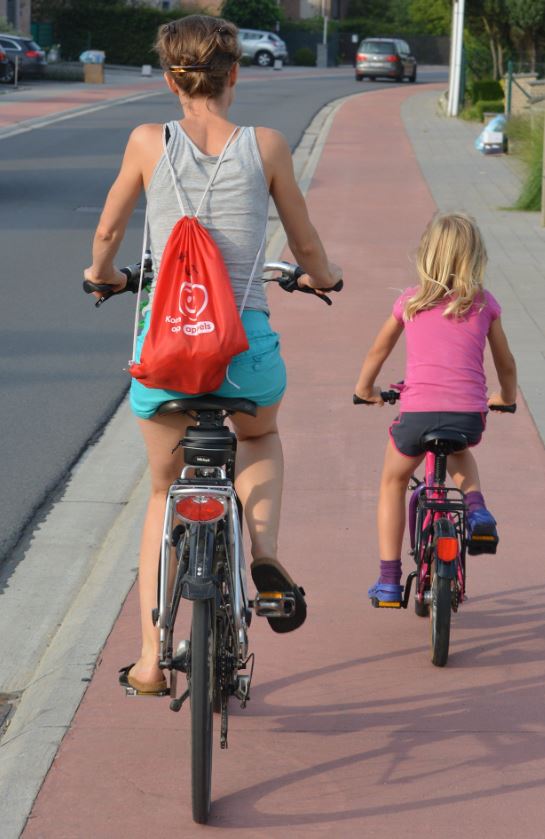Comment: Reflections on my time as a woman new to the cycling industry
As Hayley Everett departs CI.N after two years in the biz, here she reflects on her time as a woman new to the cycling trade in order to identify where local bike shops can improve provision for women in their communities; the dividends, she argues, are a much greater cycle take-up. (Hayley is replaced by Liberty Sheldon, our new staff writer)
“When others looked at women’s cycling and saw a sport with a very small amount of support and a very small amount of resources, they saw a barn. At Trek, we saw something much bigger. We saw an opportunity with women’s cycling that nobody else saw.”
The words of Trek CEO and President John Burke, spoken at the Women in Sports Foundation Gala in New York last year, go some way to indicating the real potential women’s cycling has to impact the industry for those who are bold enough to fully embrace it.
Over the past couple of years, I’ve seen huge leaps from companies and brands in attempting to do this, from developing actual women-specific cycle clothing (and not just relying on the infamous ‘pink it and shrink it’ approach) to festivals, awards and advocacy campaigns aimed at driving female participation. New ambassador programmes, scholarship opportunities and internships have been introduced to grow the number of women operating within the cycle industry, and I think it’s fair to say that some progress has been made to this end.
What I wonder, though, is whether this seemingly industry-wide drive to cater more for women really resonates at ground level.
With recent months seeing a Covid-induced spike in cycling numbers – the likes of which some are comparing to the Olympics-inspired cycle boom of 2012 – the perfect catalyst to enticing new customers, including women, into bike shops up and down the country has perhaps been gifted to the trade. But, are you set up for it?
What do women want?
With men three times more likely to cycle than women, according to official transport stats, it’s understandable that a shop’s product gender split may swing more in favour of males on a basic supply-versus-demand principle. However, if you are not catering to women proportionally and including enough stock or product variety relevant to them, then it’s pretty unlikely that the demographic of your customer base will alter in any way to include more women.
Similarly, if the only offering you have for women who are interested in taking up cycling is a small section tucked away in a corner or hidden at the back of your shop, the message you’re really sending to them is one of not belonging, or at very best, that they’re an afterthought. That’s hardly a welcoming experience for a potential cyclist and customer, and one that could put them off cycling completely. Not only is that a loss for diversity in cycling generally, but it’s also a lost potential revenue stream for no good reason other than a lack of adequate provision and planning.
But it’s not the amount of products you provide, or even the layout, which really matters unless you are stocking genuinely women-specific, practical and desirable products to meet the needs of female cyclists. Have you ever stopped to consider how the needs of women cyclists differ to men? More importantly, do the brands you stock genuinely meet these requirements?
In a time of diversity scrutiny, change and forward-thinking, its is more important than ever to put your so-called ‘money where your mouth is’ and back the brands advocating for these changes – and that includes accessibility and equality for all genders, races and creeds. Consumers are becoming increasingly savvy to the standpoints of brands on these kinds of global issues, and ultimately will look to them to bring about tangible change. It is important to remember that the brands you stock can sway consumer confidence in your business as a whole dependant on the message they give, particularly in younger people.
Inside the bike shop
Of course, for women to feel like they truly belong somewhere they need to be able to see themselves already represented in that space. Seeing female mechanics in the workshop and women in sales roles on the shop floor helps to make new, would-be cyclists feel welcomed and more comfortable. Not only does this encourage women to cycle themselves, but it also means they can identify themselves in careers within the industry which have traditionally been male-dominated and which they may have previously viewed as being unattainable.
With mechanics in all-time high demand due to the recent spike in people getting out on their bikes, isn’t now the opportune moment to encourage more women into the industry to help fill these gaps? Extra funding and training opportunities to encourage greater numbers of women into the industry would certainly go some way to changing the trade’s image from a largely male-dominated one to somewhere more in the middle.
It’s also worth looking at how we can capture the next generation of mechanics, bike builders and sales staff now, through partnerships with schools and local groups, to make young girls in particular aware that this is a career open to them. I don’t know about anyone else, but I never even knew a career as a bike mechanic was possible when I was at school. Getting involved in children becoming excited about cycling, such as through partnering with schools to provide bikes for the kids to do their cycling proficiency, or talks on cycle safety and health, will all pay dividends in the long-term by providing a potential career pathway for them, as well as a host of potential future customers for you.
 As an industry that, dare I say, has a tendency to be more pessimist than optimist when it comes to projecting performance of the market, it strikes me as strange that we complain about poor market conditions yet haven’t fully capitalised on 50% of the market available to us, by not making women’s provision a priority.
As an industry that, dare I say, has a tendency to be more pessimist than optimist when it comes to projecting performance of the market, it strikes me as strange that we complain about poor market conditions yet haven’t fully capitalised on 50% of the market available to us, by not making women’s provision a priority.
We have the opportunity now to show other industries how it’s done, and while current bike boom momentum is with us we should take the chance to encourage as many people as possible, especially groups such as women who have been little more than an afterthought in the past, to take up cycling and grow the sport as much as possible while the odds are tipped in our favour.
Right now is the time to be proactive; people are looking for alternative ways to go to work, to take the kids to school, to go to the shops, without taking public transport; the weather has been, for the most part, idyllic for cycling; the Government has told people they need to get fitter, and that cycling is a way in which they can do this. Conditions have arguably never been better to level up the industry and encourage more female customers, mechanics, store staff and advocators – Let’s not screw it up.



